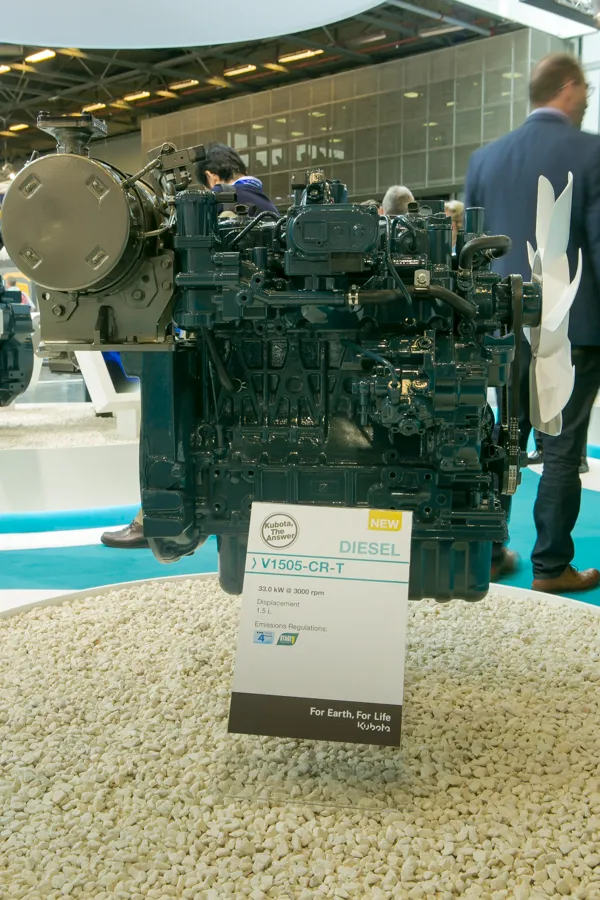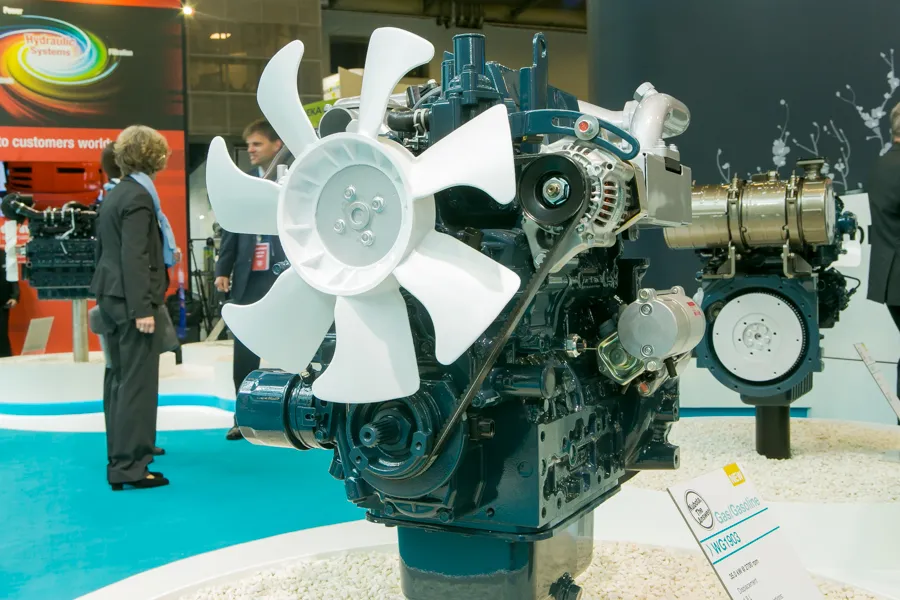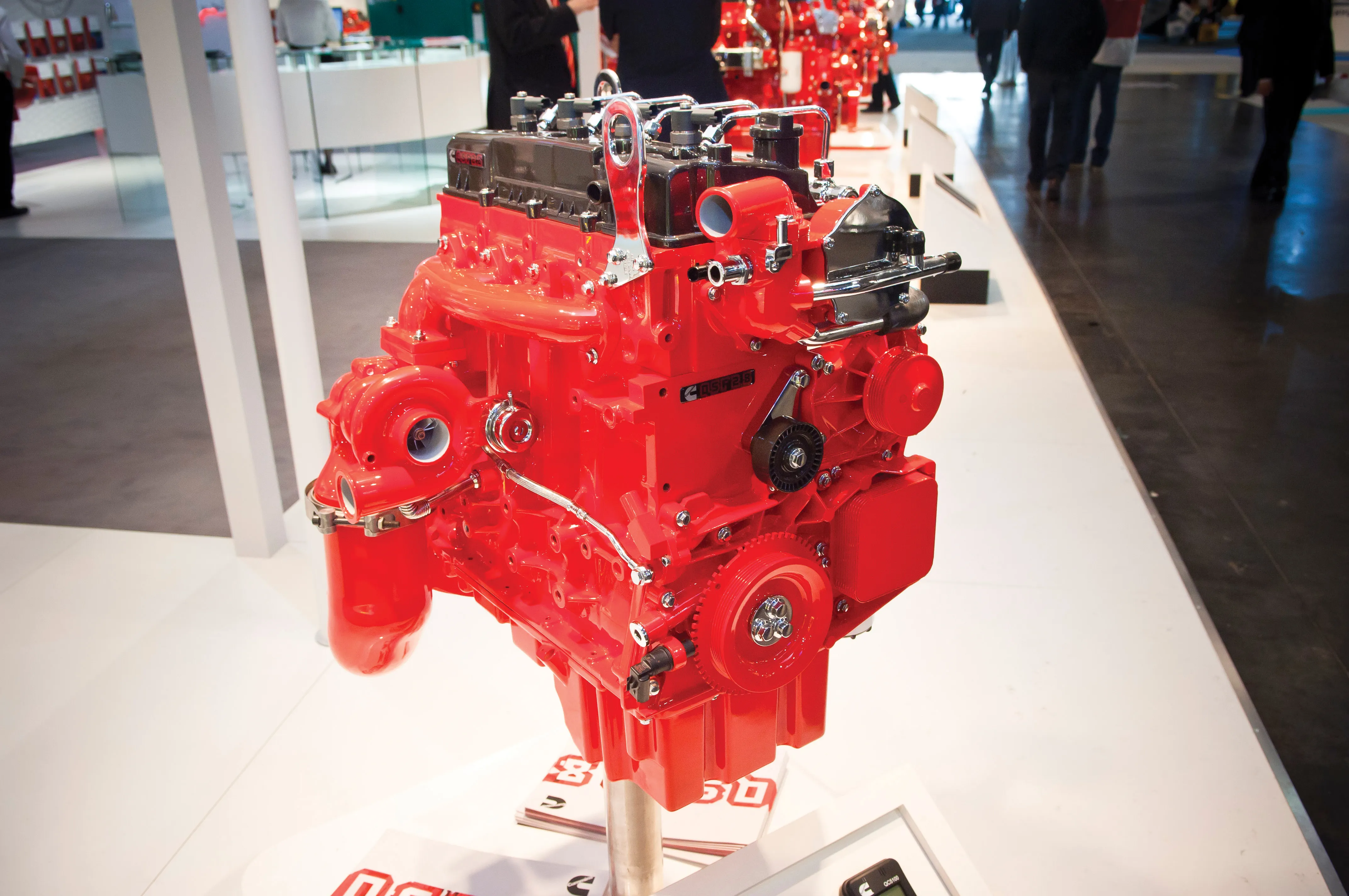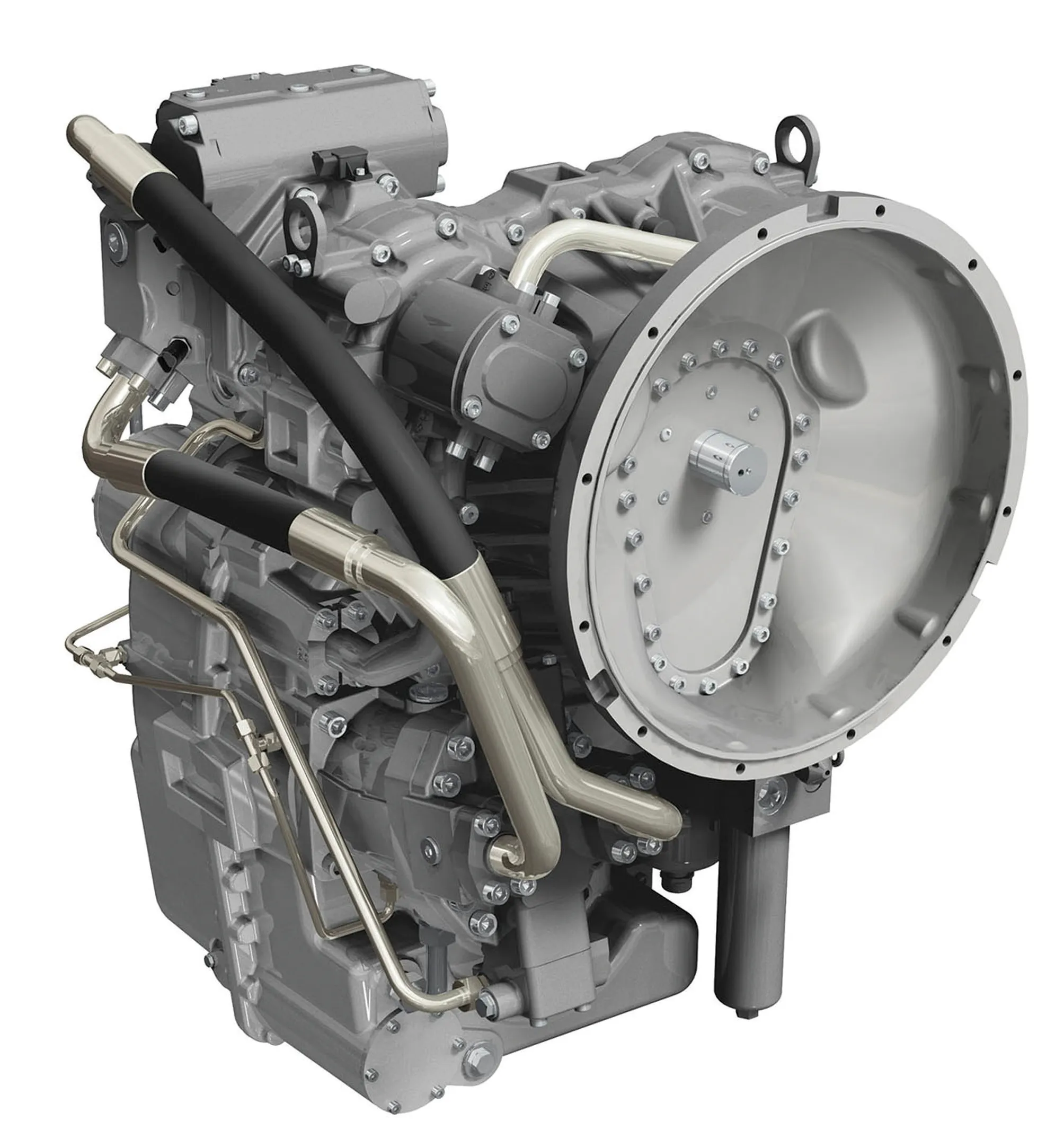
Moving from EU stage IIIa emissions to meet forthcoming EU stage V,
While engine architecture and footprint remains unchanged and will suit existing OEM customers, this evolutionary engine development sees the introduction of high-pressure common rail fuel injection, along with a DOC and DPF exhaust after-treatment solution.
“The V1505 has been an extremely popular power unit among OEMs, and going forward, we want to continue to extend its appeal with greater fuel efficiency, cleaner emissions and lower noise levels,” said Daniel Grant, marketing manager of Kubota Europe’s engine division. “The change from indirect injection with an in-line mechanical fuel pump to a high-pressure common rail system using direct injection is a move that will reduce the total cost of ownership for customers.”









